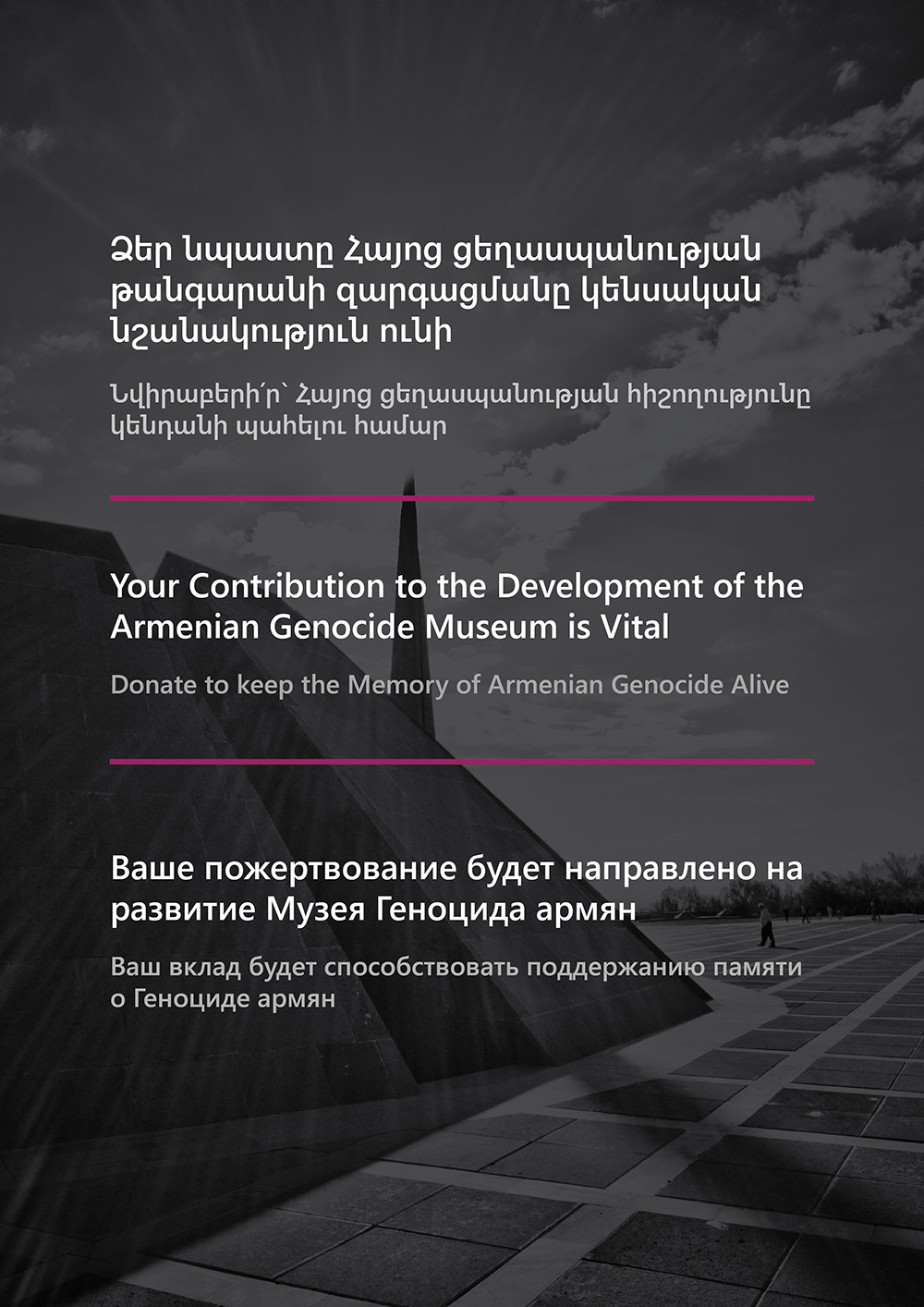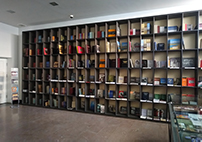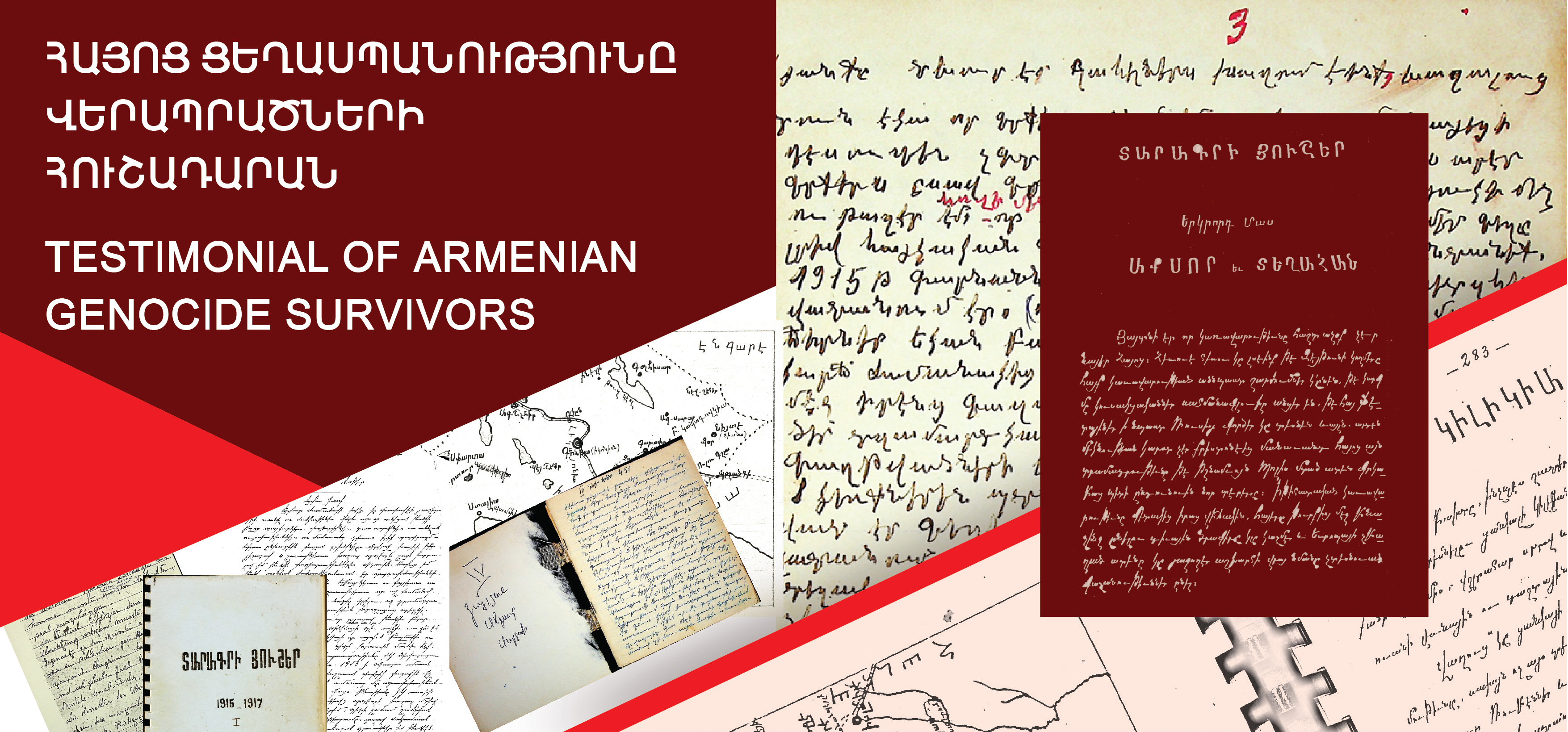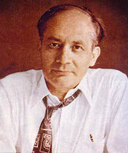Survivors stories |
“EH, IT WAS OUR LIFE”: Tiruhi’s recollection of escape and resettlement
Tiruhi Khorozyan, 96, is one of the few living witnesses of the Genocide
She was only six years old, but already perceived the words ‘enemy’ and ‘Turk’ as synonymous. She was too little to understand why it was so, but big enough to remember those bloody episodes and atrocities for the rest of her life.
Tiruhi remembers the day when she escaped the Turkish sword.
Ninety years after 1915, Tiruhi speaks about the events in her native town of Adabazar in a way as if it was only yesterday when she miraculously escaped the enemy’s sword.
“We were escaping for two days through rocks and gorges and were so thirsty that our mouths had dried, we gasped for breath. My mother went downhill to fetch water from the gorge and came back terrified. The river had become red from the blood of the dead bodies thrown into it,” Tiruhi remembers.
Adabazar is a town situated in the northwest of Turkey. In 1915 it still had a population of about 30,000 people, more than half of whom were Armenians. They were mainly engaged in trade, crafts, husbandry and fruit-growing. There were four churches there with preparatory schools and gymnasiums attached to each of them.
Tiruhi remembers that they had a large orchard of mainly chestnut and walnut trees. “We had plenty of sacks of them in the yard,” she says.
Beginning in 1915 the Armenian population was displaced and killed on the road. Tiruhi’s father, Andranik Arzumanyan, was a fidayi, a guerilla as Tiruhi calls him, who helped people escape Turkish yataghans (swords).
“One day two Turkish soldiers caught my father who had me with him. He was seized and taken away, I was a little kid, and I lost my way,” says Tiruhi.
“The soldiers showed me the direction to get to home. I took that way and what I saw was murdered people, blood and deaths on all four sides. I didn’t know what to do, where to run. I was lucky that an elderly woman was passing by with two children, she took me and said she would take me to my mom.”
On a way seemingly leading to home three Turkish soldiers caught them, and one of them wanted to kill them. “Happily, one of them said: ‘Since they have survived after all this, let them live’.”
The Turkish soldiers took Tiruhi to a place where there were 15 children.
“I became the sixteenth. When one of the Turkish officers saw me, he said he would take me with him as his daughter.”
Luckily, after long searches, Tiruhi’s mother found her daughter the same day and was able to rescue her. Then the mother took Tiruhi and her younger sister and brother to Izmir and later to Greece.
A year later they were joined by their father who had managed to escape.
During the short period of peach in 1918, about 4,000 Armenians returned to Adabazar, but not the Arzumanyans. And it proved they did the right thing, as the armistice was of a formal nature and three years later Armenians again had to leave the town for Greece and other countries through the familiar emigration roads.
“We lived in Greece for about 18 years, until 1932. We worked at a tobacco plant. When Soviet Armenia began to receive repatriates, we came to Yerevan,” Tiruhi says.
She has seen five generations following her. Today, sitting on the chair, she enjoys the company of her three-year-old great grandchild.
A few months ago Tiruhi had a brain hemorrhage and she still speaks with difficulty, though she is gradually getting better.
Tiruhi has no item from her birthplace that would remind her of her native town. “Where should I have them from if we fled from there with lightening speed?” she says.
The old woman confesses that she would hardly be ready to forgive the Turks ever. “Perhaps the young people will forgive them, because they didn’t see all that, but not me. I cannot forgive them ever,” she says and repeats: “I can’t.”
And with what seems to be her look cast back at her burning childhood, she adds: “Eh, we lived that life, good or bad it was ours. We will perhaps have a better life in the other world.”
Remember 24 April, Yerevan, 2007 by www.ArmeniaNow.com
|
|
DONATE |

TO KEEP THE MEMORY OF THE ARMENIAN GENOCIDE ALIVE
Special Projects Implemented by the Armenian Genocide Museum-Institute Foundation
|
COPYRIGHT |

|
AGMI BOOKSTORE |

The Armenian Genocide Museum-Institute’s “World of Books”
|
TESTIMONIAL OF ARMENIAN GENOCIDE SURVIVORS |

THE AGMI COLLECTION OF UNPUBLISHED MEMOIRS
|
ONLINE EXHIBITION |

SELF-DEFENSE IN CILICIA DURING THE ARMENIAN GENOCIDE
DEDICATED TO THE CENTENNIAL OF THE SELF-DEFENSE BATTLES OF MARASH, HADJIN, AINTAB
|
LEMKIN SCHOLARSHIP |

AGMI ANNOUNCES 2024
LEMKIN SCHOLARSHIP FOR FOREIGN STUDENTS
|
TRANSFER YOUR MEMORY |

Share your family story,
Transfer your memory to generations.
On the eve of April 24, the Armenian Genocide Museum-Institute undertakes an initiative “transfer your memory”.
|
|





